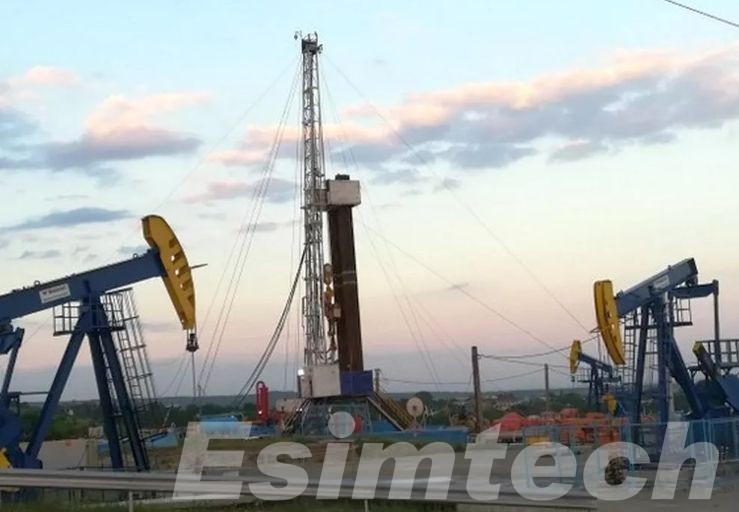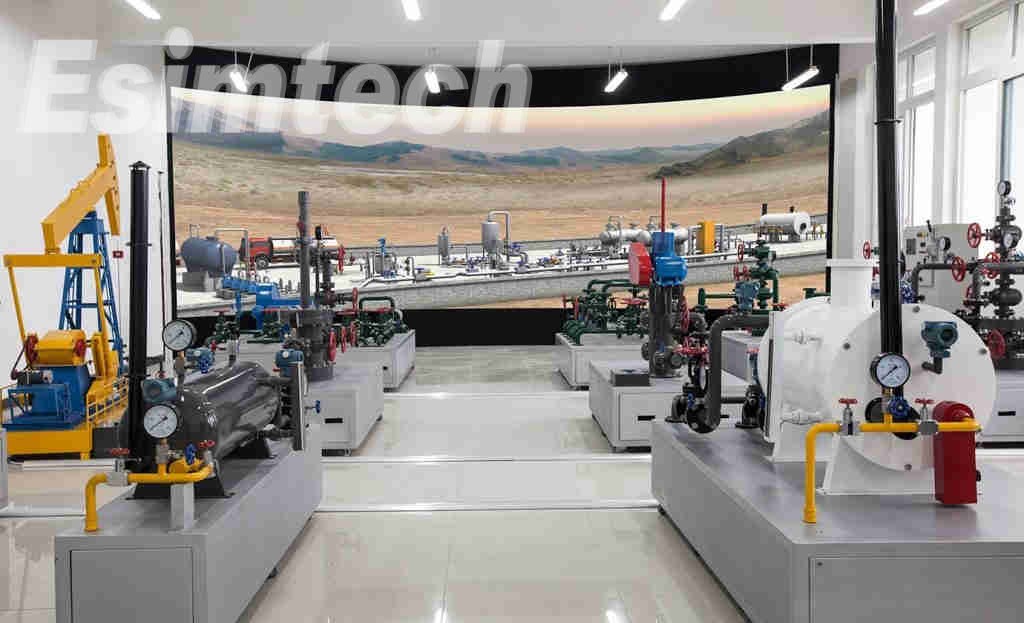How Digital Tools are Revolutionizing Oil Recovery
As the global demand for oil persists, the pressure is on to extract every drop of recoverable oil from existing reserves. Traditional methods, however, are reaching their limits. Thankfully, the digital revolution is transforming the oil and gas industry, offering a new set of tools to optimize production and squeeze the most out of mature oil fields. This article explores how digital tools are revolutionizing oil recovery, from tackling traditional challenges to empowering a new generation of oilfield workers.
Traditional Challenges in Oil Recovery

Extracting the maximum amount of oil from a reservoir has always been a complex and challenging task. Here’s a deeper look at some of the longstanding obstacles faced by the oil and gas industry:
- Declining Reservoir Pressure: As an oil field matures, the natural pressure within the reservoir that pushes oil towards the wellbore gradually depletes. This decline in pressure significantly hinders the flow of oil, making it increasingly difficult and resource-intensive to extract remaining reserves. Traditional primary recovery methods, which rely on this natural pressure to bring oil to the surface, become less effective as pressure falls.
- Reservoir Complexity: Oil reservoirs are not uniform underground landscapes. They are geologically intricate formations with varying rock types, porosities (the amount of empty space within the rock that can hold fluids), permeabilities (the ease with which fluids can flow through the rock), and pressure gradients (variations in pressure across the reservoir). These complexities can create challenges for traditional recovery methods. For instance, highly viscous oil trapped in low-permeability rock formations is difficult to extract with conventional techniques like vertical drilling.
- Limited Data and Analytics: In the past, the oil and gas industry relied heavily on limited data sets and manual analysis techniques to understand reservoir behavior and optimize production plans. This approach often resulted in a lack of crucial insights into factors like reservoir heterogeneity, fluid flow dynamics, and wellbore performance. Without a comprehensive understanding of these aspects, it’s difficult to tailor recovery strategies to maximize oil extraction from a specific reservoir.
- Inefficient Well Placement: Traditionally, well placement has often been based on a combination of geological surveys and educated guesses. This approach can lead to suboptimal well locations that don’t account for reservoir complexities or fail to target the most oil-rich zones. Inefficient well placement can result in bypassing recoverable oil or injecting fluids into unproductive areas of the reservoir.
These traditional challenges in oil recovery highlight the need for a more sophisticated and data-driven approach. The digital revolution is providing the oil and gas industry with the tools to overcome these obstacles and unlock a new era of efficient and responsible oil production.
Digital Transformation in Oil Recovery

The digital revolution in oil recovery is not a one-size-fits-all solution. It’s a multifaceted approach that encompasses a range of powerful tools and technologies:
- Big Data Analytics: Sensors deployed throughout the oilfield generate a constant stream of data on everything from pressure readings to fluid flow dynamics. Advanced analytics tools can sift through this vast amount of data, identifying patterns and trends that would be missed by traditional methods. This data can be used to optimize well performance, predict equipment failures, and identify potential problems before they occur.
- Advanced Reservoir Modeling: Gone are the days of relying solely on static geological maps. Sophisticated software allows engineers to create dynamic, 3D models of oil reservoirs. These models incorporate a wealth of data, including seismic surveys, well logs, and production history. By simulating fluid flow through the reservoir under various recovery scenarios, engineers can predict the effectiveness of different techniques and optimize production plans.
- Machine Learning and Artificial Intelligence (AI): These powerful technologies are finding increasing application in oil recovery. Machine learning algorithms can analyze vast datasets to identify subtle patterns and relationships that might be missed by human eyes. AI can be used to automate tasks like data analysis, wellbore optimization, and even the prediction of reservoir behavior.
- The Internet of Things (IoT): By connecting sensors, equipment, and even pipelines to the internet, the IoT creates a network of intelligent devices that can collect and share data in real-time. This allows for remote monitoring of well performance, faster identification of issues, and more efficient decision-making.
- Cloud Computing: The vast computational power offered by cloud platforms allows oil and gas companies to store, access, and analyze massive datasets quickly and efficiently. This removes the need for expensive on-site infrastructure and makes sophisticated data analysis tools accessible to a wider range of companies.
These are just some of the digital tools driving the transformation in oil recovery. By integrating these technologies and fostering a data-driven culture, the oil and gas industry is moving towards a more efficient, sustainable, and responsible future.
Oil Recovery Simulators in Oil Recovery Training

Oil recovery simulators are revolutionizing oil recovery training by offering a safe, immersive, and data-rich learning environment. Here’s a deeper dive into how these simulators are transforming the way future oilfield professionals are trained:
- Virtual Drilling and Reservoir Management: Simulators allow trainees to experience the entire oil recovery process in a virtual world. They can practice drilling procedures, wellbore completion techniques, and reservoir management strategies in a risk-free environment. This hands-on experience helps trainees develop critical decision-making skills and gain confidence before working on real-world projects.
- Testing Different Scenarios: The beauty of simulators lies in their versatility. Trainees can experiment with various recovery methods for different reservoir conditions. They can test the effectiveness of waterflooding, gas injection, or enhanced oil recovery (EOR) techniques, all within the safe confines of the simulation. This allows them to understand the impact of different strategies on oil recovery rates and reservoir behavior.
- Real-time Feedback and Analysis: Simulators provide immediate feedback on trainee decisions. This allows instructors to identify areas for improvement and guide trainees towards optimizing their recovery strategies. Additionally, the vast amount of data generated by the simulator can be analyzed to track progress, identify learning trends, and tailor training programs for individual needs.
- Upskilling for the Future: The oil and gas industry is rapidly adopting new technologies. Simulators can be used to train personnel on the latest digital tools used in oil recovery, such as data analytics platforms and advanced reservoir modeling software. This ensures a workforce equipped with the skills needed to thrive in the digital age of oil recovery.
Overall, oil recovery simulators offer a significant leap forward in oilfield training. By providing a safe, data-rich, and adaptable learning environment, these tools are empowering the next generation of oilfield professionals with the knowledge and skills needed to optimize recovery, maximize efficiency, and navigate the complexities of the modern oil and gas industry.
Conclusion
Digital tools are not just changing the way oil is recovered; they are revolutionizing the entire oil and gas industry. From optimizing production strategies to training a new generation of workers, digital transformation is creating a more efficient, data-driven approach to oil recovery. As technology continues to evolve, we can expect even more sophisticated digital tools to emerge, pushing the boundaries of oil recovery and ensuring responsible resource management for years to come.
